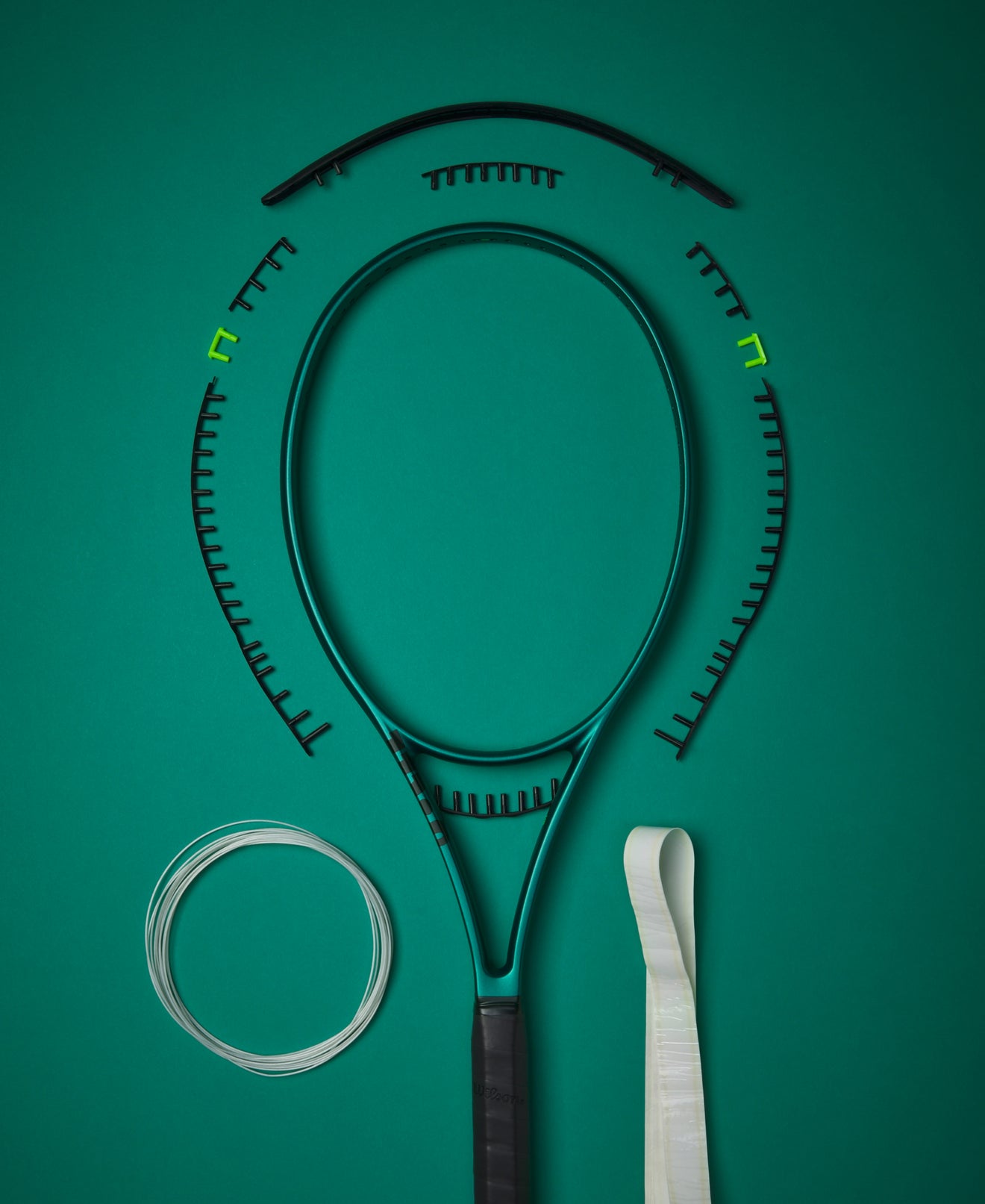
Level and Playing Style
○ Beginners: If you are new to tennis, a lighter racket with a larger hitting surface is good for providing more power and reducing the risk of missed shots. Rackets in the 260–285 gram weight class may be suitable.
○ Intermediate/Advanced: More experienced players tend to prefer slightly heavier rackets (around 300–320 grams) for increased stability, control and precision. A smaller hitting surface of 95–98 sq.in. provides better feel and the opportunity for more spin and control.

Stringing Pattern & Grip Size
○ Tighter patterns (e.g. 18x20): Provides better control and durability in the strings, but slightly less spin.
○ Open pattern (e.g. 16x19): Allows for more spin and power.
The correct grip size is important for comfort and to reduce the risk of injury.
- Grip size 1: Suitable for most juniors and some women.
- Grip size 2: Common size for women and also works for many men.
- Grip size 3: Fits the majority of men.
- Grip size 4: For those with larger hands.

Balance
Balance on tennis rackets describes how the weight is distributed – either towards the head, the grip or evenly. It affects power, control and maneuverability. Balance is often stated in millimeters from the grip and is divided into three types:
1. Weight in the head
More power, less maneuverability. Suitable for hard groundstrokes.
2. Weight in the grip
Better control and speed. Easier to handle when playing online.
3. Equilibrium
Good balance between power and control. For all-round players

Hitting surface
The hitting surface is the area on the tennis racket where the strings are located - that is, where you hit the ball. It is measured in square inches (sq in) and affects how the racket behaves when hitting the ball. We have listed the differences between different hitting surfaces below:
Smaller target area (approx. 85–98 sq in):
- More control and precision
- Smaller sweet spot – requires clean ball hits
- Popular among experienced players
Larger impact area (approx. 100–110 sq in):
- More power and forgiveness on misses
- Larger sweet spot – easier to play with
- Suitable for beginners and exercisers

Weight
○ Lightweight Rackets (260–285 grams) : Lightweight rackets are easier to maneuver and are good for beginners or players who want more power and speed in their strokes.
○ Medium-weight rackets (approx. 300 grams) : Suitable for all-round players who want a balance between control and power. Good choice for intermediate players.
○ Heavy Rackets (305+ grams) : Heavier rackets provide more stability and control, which suits advanced players who can handle the weight and who often play a more controlled and precise style of play.
The professional's choice.
Curious about what the pros play with? See which models they rely on.
